Cover photo by Sharon Stanton.
Find this species in the FBIS database (Freshwater Biodiversity Information System) here.
Family Libellulidae
Identification

Mkuze River, KwaZulu-Natal
Photo by Ryan Tippett
Small Size
Length up to 38mm; Wingspan reaches 63mm.
Male Little Scarlets are best identified by their overall red to pinkish colouration, stout, pointed abdomens with feint black lateral spots, and pale red pterostigmas. The intensity of the red colouration is variable and ranges from washed-out pink-red to shiny, vivid red. Non-breeding males that spend periods away from water become less brightly coloured in washed-out red to pink.

Limpopo
Photo by John Wilkinson
Females are duller than males. The colouration of females is also variable, ranging from yellowish-brown to pink-brown to red.

Mkuze River, KwaZulu-Natal
Photo by Ryan Tippett
This species is most similar to the Broad Scarlet (Crocothemis erythraea), but that species is larger and has a broader abdomen lacking lateral black spots. Crocothemis erythraea also has longer yellowish, as opposed to reddish pterostigmas.
Within a limited area of overlap, it may also be mistaken for the Rock Scarlet (Crocothemis divisa). The Rock Scarlet differs by completely lacking any amber at the wing bases, and by having a bright pink-red abdomen, very long red pterostigmas and a mostly brown thorax with a red wash above.
Click here for more details on identification.
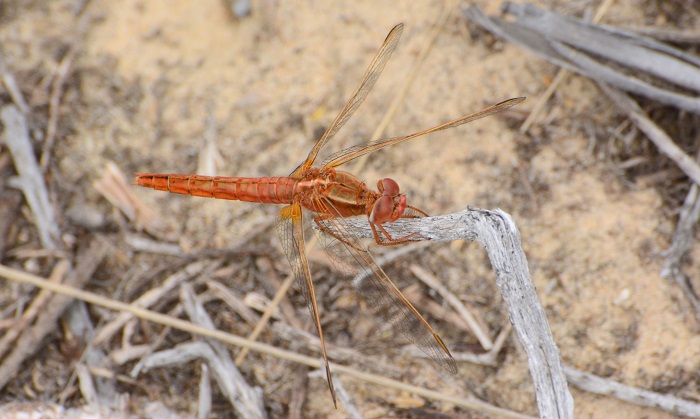
Klein Cedarberg Private Nature Reserve, Western Cape
Photo by Ryan Tippett
Habitat
The Little Scarlet is mostly associated with flowing water at streams and rivers in a variety of surrounding habitats. It generally prefers more open sites with abundant rocks and gravelly substrate. The Little Scarlet also frequents rocky ponds in mountainous areas. Non-breeding individuals are often found away from water, perched on rocks and pathways, etc. The Little Scarlet occurs at altitudes ranging from sea-level to 1800m.

Photo by Ryan Tippett
Behaviour
The Little Scarlet mostly perches on bare ground or on rocks and ocasionally perches on stream side vegetation. Flies off from a perch to capture prey, usually returning to the same site or another perch nearby. Feeds on small aerial insects. The Little Scarlet is on the wing from November to May but may fly throughout the year in some places.
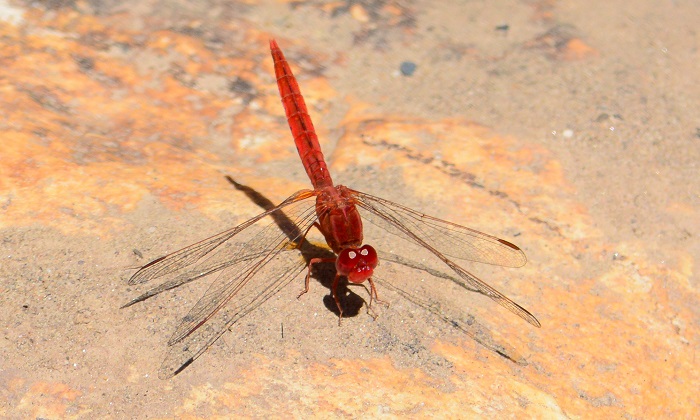
Seweweekspoort, Western Cape
Photo by Ryan Tippett
Status and Conservation
Crocothemis sanguinolenta is a common species and is listed as of Least Concern in the IUCN Red List of Threatened Species. Its reliance on flowing river and stream environments means it does not readily adapt to man-made habitats.
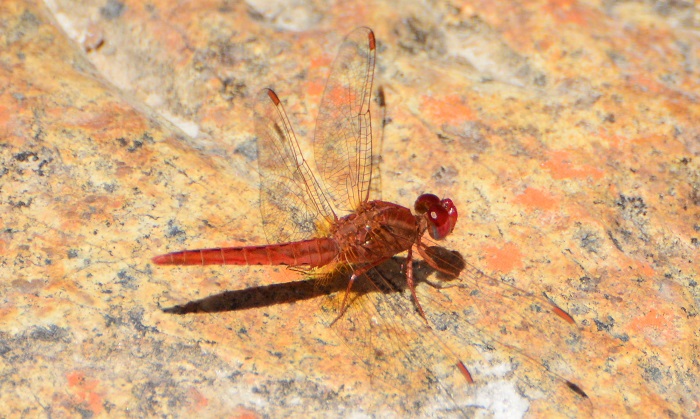
Paardeberg, Western Cape
Photo by Ryan Tippett
Distribution
The Little Scarlet is found virtually throughout Sub-Saharan Africa. It also occurs in northern Madagascar and parts of the Middle East. In South Africa, the Little Scarlet is widespread and has been recorded from all nine provinces but is scarce in the drier central and western regions.
Below is a map showing the distribution of records for Little Scarlet in the OdonataMAP database as at February 2020.

Below is a map showing the distribution of records for Little Scarlet in the OdonataMAP database as at December 2024.
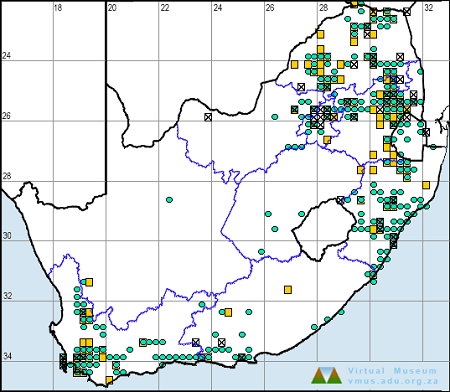
The next map below is an imputed map, produced by an interpolation algorithm, which attempts to generate a full distribution map from the partial information in the map above. This map will be improved by the submission of records to the OdonataMAP section of the Virtual Museum.


Ultimately, we will produce a series of maps for all the odonata species in the region. The current algorithm is a new algorithm. The objective is mainly to produce “smoothed” maps that could go into a field guide for odonata. This basic version of the algorithm (as mapped above) does not make use of “explanatory variables” (e.g. altitude, terrain roughness, presence of freshwater — we will be producing maps that take these variables into account soon). Currently, it only makes use of the OdonataMAP records for the species being mapped, as well as all the other records of all other species. The basic maps are “optimistic” and will generally show ranges to be larger than what they probably are.
These maps use the data in the OdonataMAP section of the Virtual Museum, and also the database assembled by the previous JRS funded project, which was led by Professor Michael Samways and Dr KD Dijkstra.
Further Resources
The use of photographs by John Wilkinson, and Sharon Stanton is acknowledged.
Little Scarlet Crocothemis sanguinolenta (Burmeister, 1839)
Other common names: Small Scarlet (Alt. English); Kleinblosie (Afrikaans)
Recommended citation format: Loftie-Eaton M; Navarro R; Tippett RM; Underhill L. 2025. Little Scarlet Crocothemis sanguinolenta. Biodiversity and Development Institute. Available online at https://thebdi.org/2020/06/17/little-scarlet-crocothemis-sanguinolenta/
References: Tarboton, M; Tarboton, W. (2019). A Guide to the Dragonflies & Damselflies of South Africa. Struik Nature.
Samways, MJ. (2008). Dragonflies and Damselflies of South Africa. Pensoft
Samways, MJ. (2016). Manual of Freshwater Assessment for South Africa: Dragonfly Biotic Index. Suricata 2. South African National Biodiversity Institute, Pretoria
Martens, A; Suhling, F. (2007). Dragonflies and Damselflies of Namibia. Gamsberg Macmillan.
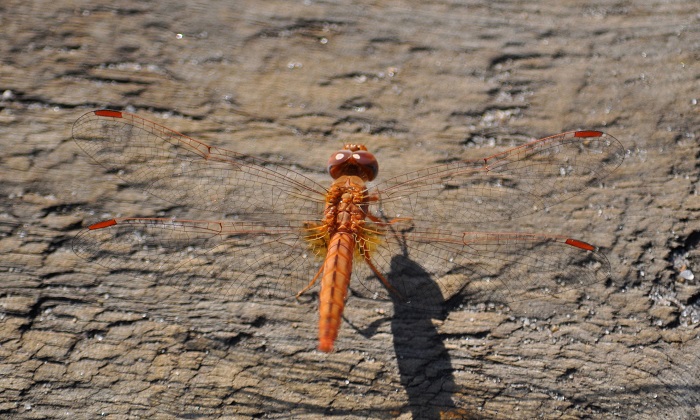
Mtunzini, KwaZulu-Natal
Photo by Ryan Tippett

